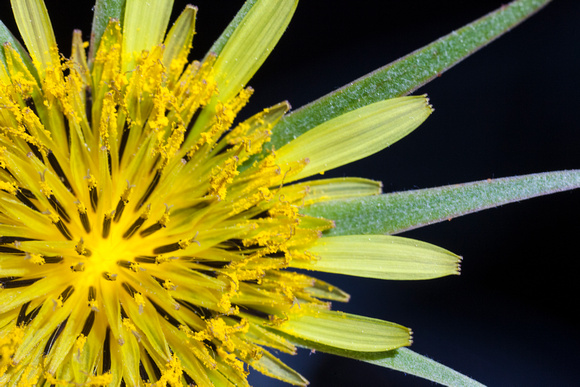Yellow Salsify
Tragopogon, also known as salsify or goatsbeard, is a genus of flowering plants in the sunflower family Asteraceae that has over 140 species, including the vegetable known as salsify, as well as a number of common wild flowers, some of which are usually regarded as weeds.
Salsifies are forbs growing as biennial or perennial plants. They have a strong taproot and milky sap. They generally have few branches, and those there are tend to be upright. Their leaves are somewhat grass-like. Flower colour varies within the genus, with some yellow species, and some bronze or purple. Seeds are borne in a globe like that of a dandelion but larger, and are dispersed by the wind.
The salsifies are natives of Europe and Asia, but several species have been introduced into North America and Australia and have spread widely there.
Some of the more common species of Tragopogon are known, in the regions where they are most common, by the common names goat's beard, goatsbeard, salsify, or common salsify, without further qualification. These names are therefore inherently ambiguous, and best avoided, or reserved for the genus collectively. In the species list below, the first common name given is the one that seems to be most widely used for that species and is not in significant use for any other species.
The vegetable called salsify is usually the root of purple salsify, Tragopogon porrifolius; the root is described as having the taste of oysters (hence the alternative common name "oyster plant" for some species in this genus), but more insipid with a touch of sweetness. The young shoots of purple salsify can also be eaten, as well as young leaves[1]. Other species are also used in the same way, including the black or Spanish salsify, Scorzonera hispanica, which is closely related though not a member of the genus Tragopogon.


